It is our pleasure to welcome Madeleine Daines, author of Lost Stones of Annunaki, as our featured author for January. In her book, Madeleine revives our understanding of Sumerian and its precious and important words whose hidden meanings have been missed and overlooked in modern times. Peeling back the layers of false assumptions and navigating the many riddles found in ancient texts, Madeleine takes the reader on a mind-altering journey of discovery.
Interact with Madeleine on our AoM Forum here.
A Powerful Name
And he traced the word Jesus back to an ancient Sumerian word that was a mushroom covered in God’s semen.
One of the recent stepping-stones on my personal path to enlightenment presented itself in the unexpected form of an interview conducted by Joe Rogan. His guest was Brian Muraresku, author of The Immortality Key and the subject was, of course, the Ancient Greek Eleusinian Mystery School and the ingredients of the hallucinogenic brew concocted there. Graham Hancock also participated. During that discussion, John Marco Allegro’s 1970 book The Sacred Mushroom And The Cross was mentioned, and Joe Rogan made the comment shown above. I already knew from my own translations that Sumerian was a major source of later languages and that its rediscovered tablets included mention of mind-altering substances, but I didn’t know that this had been quite clearly stated fifty years ago by an esteemed philologist within academia, someone who had personally studied the Dead Sea Scrolls. Allegro used the now famous Plaincourault Chapel fresco ca.1291 with its image of a ‘mushroom tree’ to substantiate his theory that the use of hallucinogens had long been part of the Christian tradition:

‘Temptation in the Garden of Eden, Chapel of Plaincourault’ by Aranthama (CCBYSA4.0)
Brian Muraresku commented that Allegro had been hypothesizing, that his assertions weren’t backed up by any mentions in translated Sumerian texts and that, in any case, Sumerian was a ‘language isolate’. In so doing, he was reiterating the damning criticisms of The Sacred Mushroom And The Cross made by the author’s peers in the 1970s, and also the standard dogma regarding the earliest known Mesopotamian writing system. Everything that has been said to debunk John Allegro’s theory of a sacred Sumerian mushroom named Jesus has been based on the fundamental ‘truth’ that Sumerian was an isolated language, i.e. that it bore no valuable relation to the later Assyrian or other later Semitic languages – no value, that is, other than having provided the Assyrians with their cuneiform writing and derived sounds of the language. But how could anyone believe that a writing system, given the name ‘Akkadian’ to fit with the name of the city of Akkad, would take all of its visible features and even its meanings from the Sumerians and yet leave the essence of that first written language to one side – amputated and discarded? No, no and no. Sumerian and Akkadian were mother and child. Nothing more and certainly nothing less. Akkadian represents a natural evolution from the maternal language, one unique tongue stemming from those pictographic words rediscovered in the lands of the Tower of Babel. This was the language of all the inhabitants of a fertile plain known by Ancient Greece as Mesopotamia, from the mouths of the rivers Tigris and Euphrates in the North, enveloping the softly sloping hills wherein lie the newly discovered sites of Gobekli Tepe and Karahan Tepe, down through Babylon to the Persian Gulf.
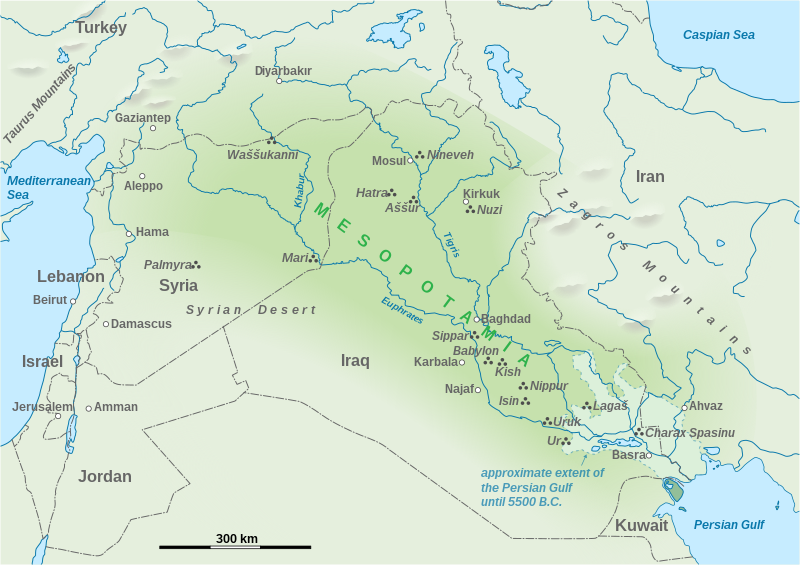
‘Map of Mesopotamia’ by Goran tek-en (CCBYSA4.0)
Mesopotamian is a more appropriate name for the language than either Sumerian or Akkadian. Apart from the fact that it encompasses both northern and southern regions, it derives from Greek meso, ‘between’ with potamus, ‘river’ and was ultimately taken from Sumerian ME-ZU with BU/PU, the ‘snake’ and ‘river’ and TAM, the ‘sun’, the two rivers/snakes of the sun.
All of this information runs counter to the foundational beliefs of both academia and those who have added fictional accounts onto poorly translated texts over the past century or so. But when I hear it said that Sanskrit is the mother tongue of all the Indo-European languages, I am forced to take issue. Sumerian is the mother of them all and the document titled The Instructions of Shuruppak, rebaptised The Story of Sukurru, is by far the oldest of them all. And so, it was a relief to learn that an expert in ancient languages, someone from inside university walls, a specialist who might be expected to sense the truth through his own work on those Gnostic texts from the 1st millennium AD, had already stated what was for me an obvious fact. And thank you, Joe Rogan, for bringing Jesus to my attention in that regard. What a powerful Name it is.
As it happens, my retranslation of The Instructions of Shuruppak self-published in 2017 had already provided the missing stepping-stone to fully vindicate some, if not all, of Allegro’s claims. If you don’t look, you don’t find. Peeling back the centuries-long layers of mistranslations, deliberate obfuscations and downright nonsense has been a daunting task and has led me down a lonely but illuminating path. Yes, Sumerian is the fundamental key to unlocking the ancient pre-Christian references to mind-altering substances and yes, there is mention of their use in at least one Sumerian text ca. 2500 BC. In fact, my translating work goes beyond that of Allegro regarding the use of hallucinogens, adding the source name of cannabis, KA-NA-AB – clearly enunciated on line 56 of The Story of Sukurru/Instructions of Shuruppak – into the mix along with a couple of unmistakable and highly evocative scenes on the theme of ecstatic rituals. Lost Stones Of The Anunnaki delves still further into that neglected Sumerian bag of tricks, looking for and finding the hitherto elusive mention of the magical bread made with that other entheogen: ergot, the wheat fungus, subject of Professor Carl Ruck’s studies and books,¹ and Brian Muraresku’s more recent contribution.
The Sacred Cross And The Mushroom stays resolutely within the tight framework of an ancient fertility cult, implying that the entire language was rooted in magic mushroom lore. The sacred mushroom is, of course, Amanita muscaria. From my own more neutral perspective, having begun at the beginning, working towards a more general understanding of the Sumerian writing through a study of its oldest forms, that is an overly narrow viewpoint. Cannabis, acacia, Amanita muscaria, ergot, fungi in general…take your pick. They were all there, all written down and waiting. At the time of Brian Muraresku’s interview with Joe Rogan in September 2020, the article titled AMA-NITA Mon Amour had already been submitted for publishing on Graham’s website. As it had not yet appeared and with the reference to Allegro’s book fresh in my mind, I added a footnote: https://grahamhancock.com/dainesm5/
A Game of Names
Lost Stones Of The Anunnaki was already taking form at the time of that podcast. It had begun with an exploration of the Anunnaki, a multi-syllabic name first used by academics in their translations and then picked up and made truly famous by Zechariah Sitchin. Today, thanks to Sitchin’s books, the ultimate reference for all things Sumerian is ‘Anunnaki’. My method considers all of the original words in and around the syllables, AN-A-NUN-NA, analysing them separately, together, and in context. Like the rest, the result of that in-depth investigation is astonishing. It takes us on another deep dive into the true nature and mindset of the Mesopotamian scholars from as far back as the 4th millennium BC. This is not a fictional account. In the preamble, I added a word of warning:
If the reader of this is enamoured of existing theoretical accounts of our past through the modern prism of the Anunnaki gods and looking forward to another layer of the same, they should perhaps stop now or at the very least prepare to be disappointed in that and in me.
This book begins by pointing out the meaningless nature of most of the names that we use today. At the very most, we link some of them to words from Greek or Latin or another ancient source seen as inferring some inherent positive quality; for example, Grace from Latin gratia, a ‘pleasing quality’ but even that can’t be taken much further back. We generally find ourselves face to face with a brick wall which goes by the uninformative and most definitely graceless name of PIE, ‘proto-Indo-European’.
The translation of Sumerian has always been carried out according to modern paradigms, one of which involves considering long meaningless names as perfectly normal and not in need of further inquiry. My suspicion is that many of those names were plucked out of the air, serving to mask an unfortunate incapacity to properly translate large portions of the language into any cohesive, logical format. That is a pretty shocking accusation and one that I don’t make lightly. I am, of course, referring to the original translators of the 19th and 20th centuries who are all long gone and who, no doubt, were convinced that it was normal procedure. They are not here to defend themselves and I don’t mean to imply dishonesty. Simply put, they underestimated the scribes while overcomplicating their own task. Unfortunately, their legacy has been carried forward, to my knowledge unchallenged within academia.
The main syllable of Anunnaki is NUN, which is also the name of the first city on the antediluvian Sumerian King List,² and the only name on that list composed of just one sign/word; monosyllabic. There are quite a few words lurking behind the names of the eight cities and their five rulers before the flood, words left untranslated in the orthodox version. The antediluvian section is comprised of the first 39 lines of a very long list and is thought to have once been entirely separate from the rest. Bearing in mind that the existing composite version, taken from several different sources, has most likely gathered errors and/or been subject to deliberate obfuscations along the way, I nevertheless decided to attempt a retranslation of this historically important document. However, when checking with the transcript of the prestigious Ashmolean prism held by the University of Oxford, it became clear that alterations to the original writing were not limited to ancient hands. Just one of the discoveries made during analysis and the subsequent re-translation of the Sumerian King List for my book is documented here:
A Temple Built On Sand – Part One: https://grahamhancock.com/dainesm6/
Part Two: https://grahamhancock.com/dainesm7/
Every Marduk Has A Mother
The information gleaned from Joe Rogan’s podcast led me to expand the reach of Lost Stones and to look for more indications of Allegro’s fertility cult as well as signs of Jesus and/or the Gnostics in their original language. That resulted in more revelations and turned into one of the main themes of the book. Along the way, I came across the great Babylonian god Marduk. (It is preferable to read the article AMA-NITA Mon Amour mentioned above before diving into this, another potentially mind-altering trip into deep Sumerian waters.)
What does anyone really know about this ‘god’? The first instinct is to type the name into a search engine and to check out the Wikipedia entry which is, as we have come to expect, brimming with affirmations about the figure and his importance throughout Mesopotamian history. Marduk is named as the great god of the Babylonians. I have no first-hand knowledge of the evolution of the character as perceived by succeeding generations of Mesopotamians. Neither am I a historian. However, Herodotus named Zeus Belos as the one god worshipped both in Babylon and in the temple of Luxor in Egypt;³ two distant places with one unifying tradition which, I suggest, is only the tip of a big fat iceberg. And I would not dismiss Herodotus’ account lightly. If he had come across Marduk, no doubt he would have mentioned such an illustrious name. Translating Sumerian through its original monosyllabic prism, my attitude to all existing ‘truths’ taken from the rediscovered Mesopotamian cuneiform writings is that a large pinch of salt should be added into the mix at every turn. To my mind, Sumerian ZE, the ‘Risen’ and the ‘Life’, who became the great Greek god Zeus, is by far the most likely name, with the additional title: EN/Belus, the Lord. What affectionate but meaningless name did his mother use? Now that’s another matter.

(CC0)
This image of Marduk shows him moving above water alongside a rather wonderful and benign horned snake. The modern-day inscription tells us that he is:
standing in victory on the watery body of the vanquished Tiamat on the occasion of the Babylonian New Year festival.
Looking at the picture, it strikes me that there is no element of ‘vanquishing’ in it at all. ‘Marduk’ is poised above flowing water in the company of a horned snake, and they appear to be advancing together in harmony. No apparent antagonism. The figure is filled from head to toe with elaborate wheels or cogs, reminiscent of the workings of a clock. My interpretation is that the figure is involved in astronomy in some form or another. As he also holds his measuring tools in one hand, that seems a reasonable assumption to make. Despite his distinguishing features, this Marduk is very similar to all the imposing Anunnaki gods seen on seals or carved onto palace walls throughout the ages and sporting a variety of individual names: Enki, Ea, etc. I propose to disassociate the Akkadian name from that image, apparently a relatively modern label attached to an age-old theme, and to look more closely at its original components.
Marduk stems from AN-AMAR-UD. Given just twelve times in the extremely long list of proper nouns offered up by academia,⁴ the threesome nevertheless appears 3,780 times, mainly beginning with the Old Babylonian era, ca.2000 BC, on the CDLI website. Strangely, that combination doesn’t sound much like Marduk whichever way you try to bend it, whichever phonetic forms of the original words are used. Without context, it translates to a far more informative and interesting title:
‘Golden’ is not one of the meanings given in orthodox lexicons for UD/UTU, the sun, but it can hardly be denounced as unlikely or irrelevant. The breakdown of the original Sumerian words translated by academia to Marduk gives a quite distinctive ‘Golden Calf’, a figure well known to us as the precious effigy which, in the biblical story of the exodus from Egypt, is the cause of the bitter outburst of Moses and the breaking of a pair of precious tablets.
As Moses approached the camp and saw the calf and the dancing, he burned with anger and threw the tablets out of his hands, shattering them at the base of the mountain. Then he took the calf they had made, burned it in the fire, ground it to powder, and scattered the powder over the face of the water. Then he forced the Israelites to drink it. “What did this people do to you,” Moses asked Aaron, “that you have led them into so great a sin?”… (Exodus 32:19-21)
The earliest versions of AMAR, given in the academic lexicons as ‘to take care of’ and ‘calf’ or ‘son’ appear as an unidentifiable animal head, presumably that of the son of the bull – which in turn leads to the bull being the sun, which in turn leads to the mother also being a bull or rather a cow. Hathor, is that you?
AMA and AMAR are two distinct words, the mother and her calf, her offspring which is in her care and which she presumably nourishes with her milk. The biblical text describes a curious scene in which the calf is ground down and transformed into something else altogether, a brew that will be forced on the unruly crowd by an angry Moses. Why would he do that? Why not just walk off in a huff and leave them to fend for themselves? Instead of that natural reaction, he gets out his cauldron and starts grinding. ‘Curioser and curioser’, as only Alice could say about such strange behaviour.
Flies And Worms
Agaric: 1530s, an herbalists’ name for a wide range of fungi, from Latinized form of Greek agarikon, name of a corky tree-fungus used as tinder, said by ancient sources to be from Agari in Sarmatia. 5
Taking AMA, the mother, and AMAR, the son, to be sources of later words, we find another curiously unlikely mix through Latin amare which is ‘to love’ and Latin amarus which is ‘bitter’.
The lexical lists⁶ confirm the Sumerian source of the Latin notion of bitterness through the breakdown of AMAR into A-MAR, then on to later Akkadian ‘marru’ given as ‘bitter’. ‘Parasite’, ‘worm’ and ‘louse’ are three of the main given meanings of MAR.
The lexical lists for AMAR also offer up a compelling origin for the secondary name of the Amanita muscaria mushroom, the ‘fly agaric’. A-MAR, the worm of bitterness, is given numerous times opposite A-GAR.
‘Agaric’ from Greek agarikon, a tree fungus, in turn, is thought to derive from a more ancient and nebulous source (see quote above). In other words, no meaningful explanation for the sound of it has ever been given.
Sumerian MAR gives the source of Portuguese ‘margosa’, a bitter-tasting plant with far-reaching anti-parasitic and curative properties. The oil from its seeds, used in medicine and as a pesticide, repels insects and kills the eggs. Its leaves are given to children to chew on their way to school (as told to me by one of those children born in India) while dried leaves protect clothes and other stored materials. That is a fitting name for the loving care that might be extended by AMA, the mother, to AMAR, her child; bitter and difficult to swallow but effective. Margosa is also commonly called neem, through Sanskrit, a name that stems from Sumerian NIM, given as ‘insect’, ‘fly’ and ‘buzz’. MAR, the parasite, and NIM, the flying insect.
NIM is the fly of the ‘fly agaric’, a name acquired by the Amanita muscaria mushroom because the brightly coloured cap both attracts and injures or kills the insects. The flies are the fools in love.
Sumerian NIM appears in the description of an ancient ritual, just one of the revelations of The Story of Sukurru. It was obvious that some form of hallucinogen was being evoked during this increasingly frenetic scene, and hence the illustration of a female hand brandishing opium poppy buds, a detail taken from a painting on an ancient Greek vase. I made the choice of using the easily recognisable name Ea and transforming NIM, thanks to the given meaning ‘buzz’, into a mosquito for comedic effect – fitting with the overall humour of the text. This is how line 223 of The Story of Sukurru was translated in context:
At the time of translating, it didn’t come to mind that the Amanita muscaria is also known as the ‘fly agaric’ and that the presence of MI next to NI, the ‘blackness’ and the ‘oil’, given as ‘dark night’ was an important reference to mind-altering substances.⁷ The fly-in-a-jar character (as I chose to name him more than once) had been identified in other parts of the text but also in at least one Sumerian proverb and I took it to be nothing more than a humorous term for the incessant noise of humanity – likened to that of a fly fighting to disentangle itself from a spider’s web or escape through a closed window. I was missing something. The fly was a metaphor for the fool who will be cured of his folly by a bitter treatment. The harsh but loving cure takes the form of a dark cloud through which he will have to travel in order to be reborn. The reference to hallucinogens and to spiritual enlightenment is unmistakable. I perceived some of it but not the full extent.
An Enlightened Lament For Sumer
John Marc Allegro wrote The Sacred Mushroom And The Cross fifty years ago. It is more than time to exhume his unorthodox ideas about the language from their ignominious burial by his peers and to re-examine everything we have been given to believe. I hope to be proven wrong, but it seems obvious that Assyriologists will continue to ignore The Story of Sukurru despite it presently being our sole entry, the only rabbit hole through which to plunge into the minds of the original scribes; in other words, an invaluable document full of precious information about our past. It cannot be demolished through any plainly spoken explanation.
Lost Stones Of The Anunnaki also investigates a few of the Sumerian riddles chosen for their importance in reconstituting the knowledge transmitted by our ancestors. The truth about the first Mesopotamians, what they knew and how they left their story behind them is not easy to perceive but neither is it impossible.
Finally, this book makes a couple of paradigm-changing claims for the Sumerian language. Even John Allegro did not go so far. The earliest Gnostic teachings, including the very word ‘gnosis’, derive from that Sumerian source. They are more than simply pre-Christian. They are as old as is Hermes Trismegistus who is Egyptian Thoth, both of them once revered and then laughed out of existence over the centuries by those who believe that they themselves hold all the keys. The most important of the rediscovered underlying themes dating back to at least the 3rd millennium BC is that of the Hermetic tradition, the quest for the ultimate Gnostic wisdom known to us, thanks to the Ancient Greeks, as Sophia, a journey that most certainly once involved the use of mind-altering substances. With that in mind, I wrote the following:
An open mind is a prerequisite for this journey back through the ages where each individual travels at their own speed, examining the evidence offered here along the way. This is not a question of believing or disbelieving. The evidence is available here and elsewhere to those who want the truth. While the words of Hermes Trismegistus are gifted to us, their meanings are hermetic and must be earned. Everything is possible to a truly great magician – even the heavy task of opening modern eyes. ⁸
The great lesson from His scribes is that their story is revealed only when we leave all existing ‘truths’ to one side, when we step firmly out of the present paradigm, setting aside our egos, accepting to be silent and to listen patiently for their distant voices, rather than bowing unquestioningly to those in self-attributed roles of authority who would speak for them. I, for one, am listening.
References:
¹ Professor Carl A. Ruck, an authority on the ecstatic rituals of the Greek god Dionysus, has written and co-authored a number of books on the subject of entheogens, notably Persephone’s Quest: Entheogens and the Origins of Religion written with R. Gordon Wasson, Stella Kramrisch and Jonathan Ott (1988).
² Sumerian King List: https://etcsl.orinst.ox.ac.uk/cgi-bin/etcslpropnoun.cgi
The first city is presented in its present-day alphabetic form as ‘eridug’ (lines 2, 3, 8). My method consists in peeling back the layers to the word that was actually inscribed on the tablet, i.e. a non-alphabetic sign; in this case, one that carries the primary phonetic form NUN. Put simply, however we choose to pronounce it, the original sign is unwavering. Call it what you will. It doesn’t make any difference – apart from creating confusion when the same original sign is transliterated into two different phonetic forms (a common occurrence) within the same line of text to fit with some modern interpretation of the grammar.
³ Herodotus, Histories Book One, 181-183.
⁴ ETCSL list of proper nouns: https://etcsl.orinst.ox.ac.uk/cgi-bin/etcslpropnoun.cgi
The CDLI site (Cuneiform Digital Library Initiative) indicates the number of times the name has been found on recovered tablets.
⁵ Dictionary of Greek and Roman Geography (1854, William Smith, LLD, Ed.) (Pliny Nat. 25.9. s. 57; Dioscor. 3.1; Galen, de fac. simp. med. p. 150), (www.perseus.tufts.edu).
⁶ Sumerian lexical lists: tablets on which were inscribed the Sumero-Akkadian words, their etymologies and equivalences dating back to the earliest monosyllabic sources. Academics take them to be bilingual dictionaries matching two separate languages for their sounds.
⁷ I also noted under MI-NI the words ‘a toast’, borrowed from the meaning of ‘minni’ in Old Norse: a toast to the deceased, a subsidiary translating decision made partly from context but aided by the presence of TAR-A which has the meaning ‘to cut the flow’ and which translated quite literally to ‘tar water’, a cedar extract mentioned by Pliny in the context of embalming:
This extract from the cedar preserves the bodies of the dead uncorrupted for ages but exercises a noxious effect upon the bodies of the living – singular that there should be such a diversity in its properties, taking away life from animated beings, and imparting a sort of life, as it were, to the dead.
⁸ All forms of knowledge nourish themselves from themselves. Everything living on its own processes, all locked within a vessel. All transmutations exist sealed within vessels. Everything is more or less internally generated. Quotes from Manly P. Hall discussing the Golden Chain of Homer in which he gives an explanation of the original meaning of ‘hermetic’, taken from but also the reason behind the name Hermes Trismegistus. The questioning is external. The answers come from within.






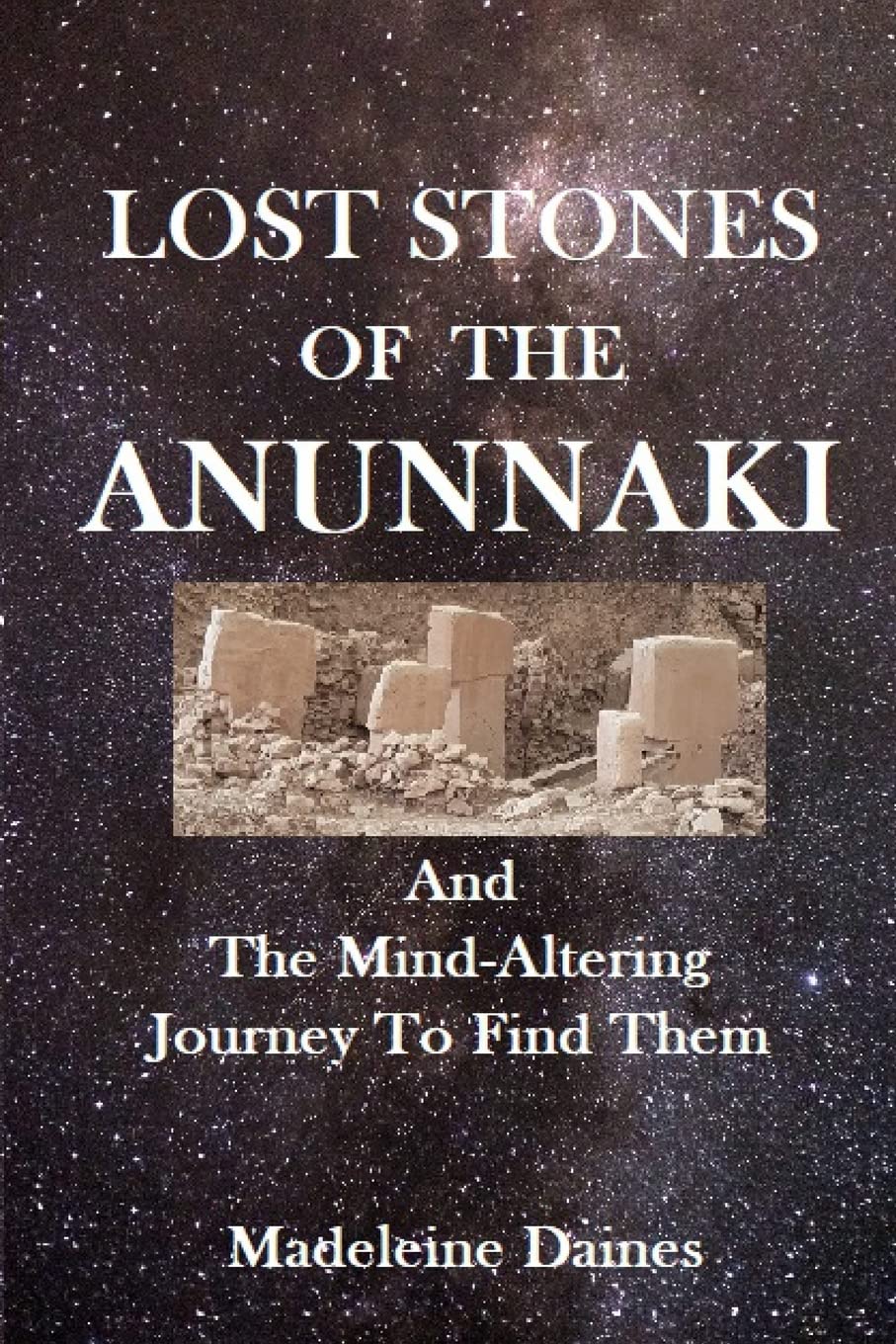
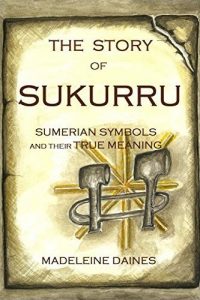
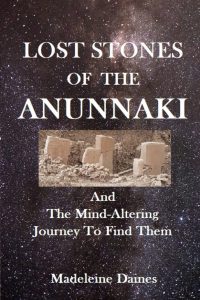
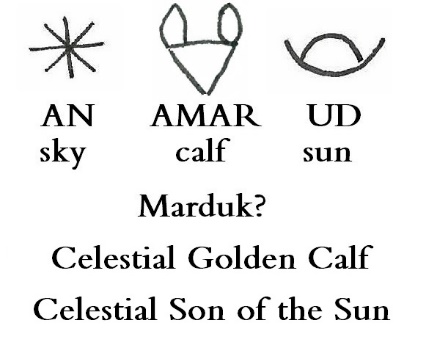
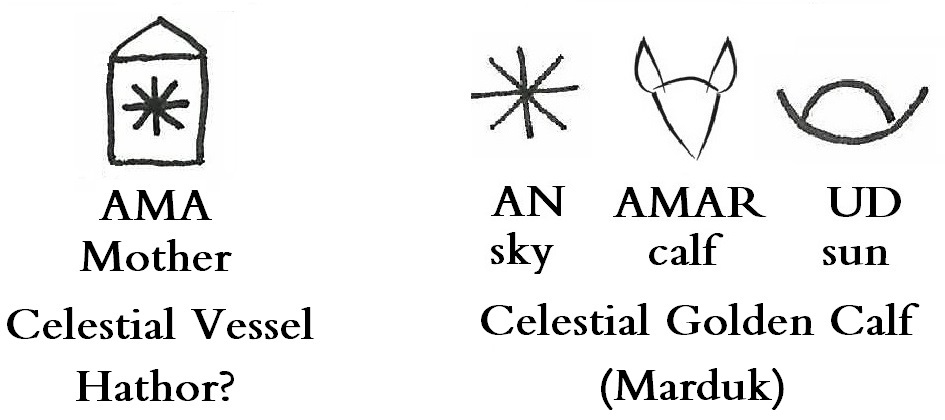


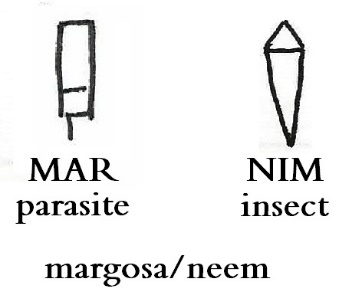
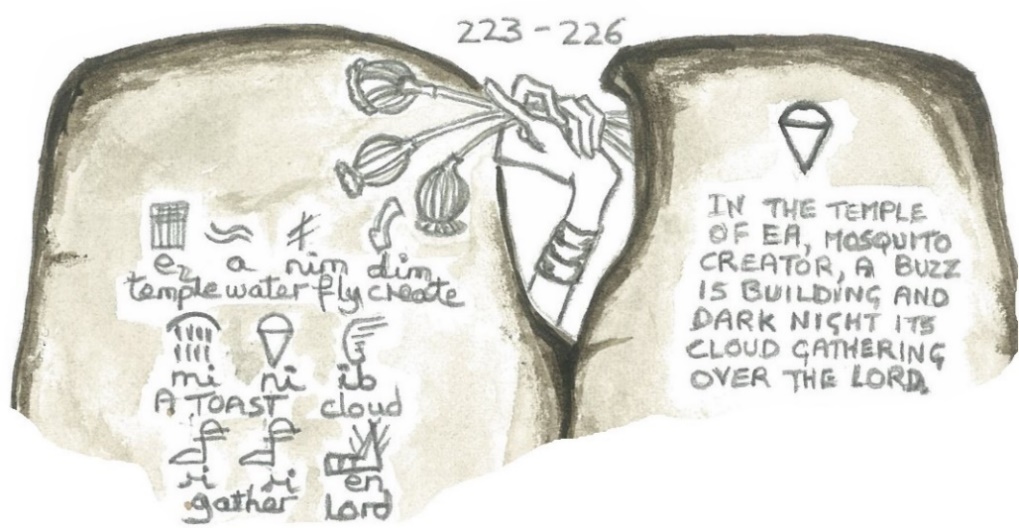
Thanks Graham. Your curiosity and research is invaluable to understanding our history.
We may be born into ignorance, but curiosity ensures we break the cycle.
Excellent interdisciplinary work and confirmation of a line of enquiry that I expect to quote in an upcoming paper inspired by Inanna Prefers The Farmer. I will send you a copy.
Curioser and curioser: Moses was not punishing the Israelites with a foul-tasting soup, but spiritually enlightening them by having them drink monatomic gold.
Amazing article!!!! Thank you!!! and Thanks to Mr. Graham Hancock!!!
More on the AoM board:
Gnostic Sophia in the Sumerian Tablets: https://grahamhancock.com/phorum/read.php?8,1298369
Nuraghes of Sardinia and the Quest for Etymologies: https://grahamhancock.com/phorum/read.php?8,1297735
I really do love whistling cake and studying
And this is a great subject to go with the other two
Thanks great article
1. Let the Demon-gods and Goddesses fly far away from hence, and let the good Sraosha make here his home! [And may the good Blessedness here likewise dwell], and may she here spread delight and peace within this house, Ahura’s, which is sanctified by Haoma, bringing righteousness (to all).
2. At the first force of thy pressure, O intelligent! I praise thee with my voice, while I grasp at first thy shoots. At thy next pressure, O intelligent! I praise thee with my voice, when as with full force of a man I crush thee down.
3. I praise the cloud that waters thee, and the rains which make thee grow on the summits of the mountains; and I praise thy lofty mountains where the Haoma branches spread.
4. This wide earth do I praise, expanded far (with paths), the productive, the full bearing, thy mother, holy plant! Yea, I praise the lands where thou dost grow, sweet-scented, swiftly spreading, the good growth of the Lord. O Haoma, thou growest on the mountains, apart on many paths, and there still may’st thou flourish. The springs of Righteousness most verily thou art, (and the fountains of the ritual find their source in thee)!
5. Grow (then) because I pray to thee on all thy stems and branches, in all thy shoots (and tendrils) increase thou through my word!
6. Haoma grows while he is praised, and the man who praises him is therewith more victorious. The lightest pressure of thee, Haoma, thy feeblest praise, the slightest tasting of thy juice, avails to the thousand-smiting of the Daevas.
7. Wasting doth vanish from that house, and-with it foulness, whither in verity they bear thee, and where thy praise in truth is sung, the drink of Haoma, famed, health-bringing (as thou art). [(Pazand) to his village and abode they bear him.]
8. All other toxicants go hand in hand with Rapine of the bloody spear, but Haoma’s stirring power goes hand in hand with friendship. [Light is the drunkenness of Haoma (Pazand).]
Who as a tender son caresses Haoma, forth to the bodies of such persons Haoma comes to heal.
9. Of all the healing virtues, Haoma, whereby thou art a healer, grant me some. Of all the victorious powers, whereby thou art a victor, grant me some. A faithful praiser will I be to thee, O Haoma, and a faithful praiser (is) a better (thing) than Righteousness the Best; so hath the Lord, declaring (it), decreed.
10. Swift and wise hath the well-skilled Deity created thee; swift and wise on high Haraiti did He, the well-skilled, plant thee.
11. And taught (by implanted instinct) on every side, the bounteous birds have carried thee to the Peaks-above-the-eagles, to the mount’s extremest summit, to the gorges and abysses, to the heights of many pathways, to the snow-peaks ever whitened.
12. There, Haoma, on the ranges dost thou grow of many kinds. Now thou growest of milky whiteness, and now thou growest golden; and forth thine healing liquors flow for the inspiring of the pious. So terrify away from me the (death’s) aim of the curser. So terrify and crush his thought who stands as my maligner.
13. Praise be to thee, O Haoma, (for he makes the poor man’s thoughts as great as any of the richest whomsoever.) Praise be to Haoma, (for he makes the poor man’s thoughts as great as when mind reacheth culmination.) With manifold retainers dost thou, O Haoma, endow the man who drinks thee mixed with milk; yea, more prosperous thou makest him, and more endowed with mind.
14. Do not vanish from me suddenly like milk-drops in the rain; let thine exhilarations go forth ever vigorous and fresh; and let them come to me with strong effect. Before thee, holy Haoma, thou bearer of the ritual truth, and around thee would I cast this body, a body which (as all) may see (is fit for gift and) grown.
15. I renounce with vehemence the murderous woman’s emptiness, the Jaini’s, hers, with intellect dethroned. She vainly thinks to foil us, and would beguile both Fire-priest and Haoma; but she herself, deceived therein, shall perish. And when she sits at home, and wrongly eats of Haoma’s offering, priest’s mother will that never make her, nor give her holy sons!
16. To five do I belong, to five others do I not; of the good thought am I, of the evil am I not; of the good word am I, of the evil am I not; of the good deed am I, and of the evil, not.
To Obedience am I given, and to deaf disobedience, not; to the saint do I belong, and to the wicked, not; and so from this on till the ending shall be the spirits’ parting. (The two shall here divide.)
17. Thereupon spake Zarathushtra: Praise to Haoma, Mazda-made. Good is Haoma, Mazda-made. All the plants of Haoma praise I, on the heights of lofty mountains, in the gorges of the valleys, in the clefts (of sundered hill-sides) cut for the bundles bound by women. From the silver cup I pour Thee to the golden chalice over. Let me not thy (sacred) liquor spill to earth, of precious cost.
18. These are thy Gathas, holy Haoma, these thy songs, and these thy teachings, and these thy truthful ritual words, health-imparting, victory-giving, from harmful hatred healing giving.
19. These and thou art mine, and forth let thine exhilarations flow; bright and sparkling let them hold on their (steadfast) way; for light are thine exhilaration(s), and flying lightly come they here. Victory-giving smiteth Haoma, victory-giving is it worshipped; with this Gathic word we praise it.
20. Praise to the Kine; praise and victory (be) spoken to her! Food for the Kine, and pasture! ‘For the Kine let thrift use toil; yield thou us food.’
21. We worship the yellow lofty one; we worship Haoma who causes progress, who makes the settlements advance; we worship Haoma who drives death afar; yea, we worship all the Haoma plants. And we worship (their) blessedness, and the Fravashi of Zarathushtra Spitama, the saint.
http://www.avesta.org/yasna/yasna.htm#y10
28.402 – “When owing to that famous question of the Beyond, they organized the ‘general-planetary-conference’ of all the learned beings there, there happened to be also among the learned beings who went to Babylon on their own accord, the great-grandson of Lentrohamsanin himself, who had also become a learned being.
28.402 – “And he took with him, there to the city of Babylon, an exact copy of the mentioned Kashireitleer, but made on papyrus, the original of which had been inscribed by his great-grandfather and which he had obtained by inheritance, and at the very height of the ‘frenzy’ concerning the ‘question-of-the-soul’ during one of the last big general meetings of the learned beings, he read aloud the contents of that maleficent ‘invention’ of his great-grandfather’s; whereupon, it occurred—as it had also become proper to the ‘sorry-learned-beings’ of this planet, thanks to their strange Reason—that from one question which interested them, they at once passed to quite another, namely, from the question ‘of-the-soul’ to the question of what is called ‘politics.’
28.402-3 – “Thereupon in the city of Babylon, meetings and discussions again began everywhere concerning the various kinds of already existing state-organizations and those which in their opinion ought to be formed.
28.403 – “As the basis of all their discussions they took, of course, the ‘truths’ indicated in the invention of Lentrohamsanin, this time expounded on what is called a papyrus that had been taken there by his great-grandson, and a copy of which almost every learned being who was then in Babylon carried in his pocket.
28.404 – “Well then, my boy, those Babylonian learned beings who, owing to various reasons, survived and were scattered everywhere over the surface of almost the whole of the planet, continued by momentum their wiseacring, the basis of which, they made—of course, not consciously but simply mechanically—those two leading questions which had arisen and which had been the ‘questions-of-the-day’ during the said Babylonian events, namely, the famous questions concerning the ‘soul’ of men and the ‘innercommunal-organization.’
28.404 – “The result of these wiseacrings of theirs was that over the whole continent of Asia civil wars again broke out in various communities, and the processes of mass reciprocal-destruction between different communities.
28.404-5 – “The destruction which thus proceeded of the remnants of the results of the conscious labors of the Very Saintly Ashiata Shiemash, continued on the continent of Asia for about a century and a half; yet, in spite of this, in some places there were preserved and even by momentum were still carried out certain forms that had been created by Ashiata Shiemash for their beneficent being-existence.
– Gurdjieff, “Beelzebub’s Tales to His Grandson”
Hi Granham,
Just saw a interesting post on FB. It’s a photo of a stone “man bag” and some other things found. I’ll put the link in here, hope it gives you access so you can see the photos.
https://www.facebook.com/groups/817715138398710/permalink/1707168799453335/
They look Anunnaki. Nasir Shah is the poster, on the FB page “Archaeology News, Art and Ancient Wonders” dated today, Jan. 30, 2022. FYI. Follow you and appreciate your work greatly btw.
The photo shows it to be identical to those found in Jiroft in Iran. I take them to be weaving weights with astronomical and mythological scenes.
The three baskets, as shown in the carvings of Gobekli Tepe, are mentioned in the Sumerian text The Story Of Sukurru (ca.2600-2500 BCE)over three lines 209 to 211. According to that text, they are offering baskets made of woven reeds as confirmed on the massive stone figures commonly called Anunnaki but also identifiable on one of the Mesopotamian tablets from the 4th millennium. My suggestion is that the Persian artefacts had a practical purpose as stone weaving weights, most probably for carpet making, were shaped in the image of the well-known reed offering baskets and decorated with their related stories.
https://en.wikipedia.org/wiki/Jiroft_culture
TAR-A means to cut the flow?
In Britain, Tara means goodbye, after a chat; so in a sense also cutting the flow of conversation.
I’ve read quite a few books in the last year about the Anunnaki, and there is so much information about them that just trying to figure out where to begin can sometimes be very hard. To understand who the Anunnaki were, you have to go back to when they were first called the Anuna by the Sumerians.
https://rebirthoftheword.com/discovering-the-oxford-university-interpretations-of-the-anunnaki/